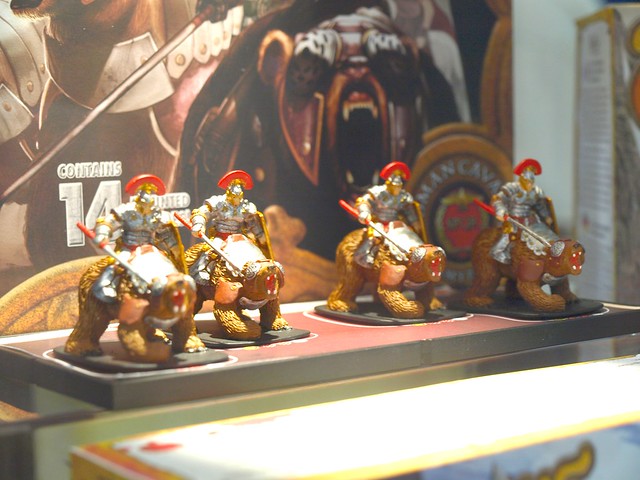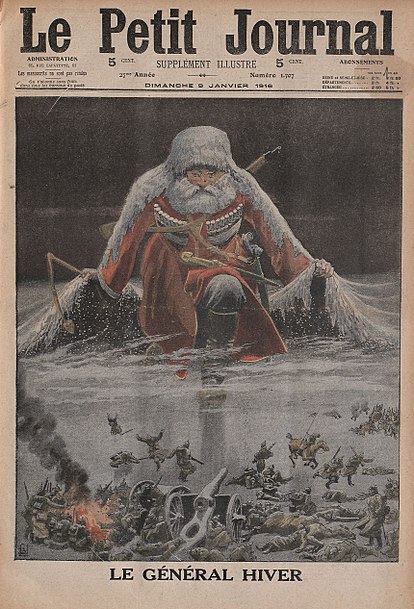Although 15 mm fantasy figures are available, the main appeal of 20 mm is the broader availability of 1/72 plastic sets. Some of these are released for games, and I've been using the armies from War of the Rings for the last couple semesters, even though these are at the large end of the range (more like 25 mm). The variety of troops and poses is pretty limited, and it's tempting to switch over entirely to smaller figures.
There are currently three sources of inexpensive fantasy miniatures in the 20-25 mm scale:
- Board games like WotR, Age of Mythology, and Age of Conan
- Plastic soldier sets from Caesar and Red Box (released under the Light/Dark Alliance label)
- Resold boxes from the recently discontinued Arcane Legions game
All of these provide a pretty generous collection of different poses, and usually sell at less than 50 cents per miniature. This is about a tenth the cost of a comparable metal mini, and a fifth of the cost of high-quality plastic minis. It's currently possible to field hefty armies of humans, dwarves, elves, undead, and orcs, without breaking a $50 total budget.
Covering all the more obscure troop types in the D@W system requires a bit of scrounging. Here's a roadmap I'm considering for acquiring a more or less complete set:
- Start with the War of the Rings minis. This provides a nice mix of infantry and cavalry for humans, dwarves, elves, and orcs. As a bonus, you also get some (not-to-scale) war elephants and cave trolls. That's just as well, since a 1/72 elephant wouldn't really fit well on a hex map anyway. Already owned!
- Buy the Caesar Miniatures (or Red Box) sets necessary to get some undead and unique hero units. I think the cheapest options are Caesar F104-Adventurers and F103-Skeletons. That's another $30.
- Add all three of the Age of Mythology game piece sets, which can be purchased independently from the publisher's website. These provide alternate (and not consistently scaled) versions of ancient-world infantry, cavalry, giants, elephants, chariots, and lots of classic mythological creatures, for a very low price of $3 per set.
Even factoring in the cost of shipping and handling, that's not more than another $50 beyond WotR, which is a solid enough game in its own right so that the minis are virtually a free bonus.
Now it becomes necessary to fill in the gaps and find more obscure troop types.
- Camel Cavalry: HaT makes a few colonial-era camelry sets, including two of African irregulars (Hadedowah and Taaishi) that don't carry any weaponry that would place them outside the medieval era.
- Camel Archers: Probably the closest equivalent is Caesar's Bedouin set, which features Biblical-era Arab riders. But it might be better to just get...
- Horse Archers: This Mongol set from Italeri has a half-dozen of them. As an added bonus, it comes with more camels! On a tight budget, this could cover all three categories at once. For a more primitive take on horse archers, there's also this Scythian set from Zvezda.
- Cataphracts: These late-Roman and Byzantine cavalry are captured in all their glory by Zvezda. Of course, you can just use any old heavy cavalry and call them cataphracts, if you don't care about them looking particularly Byzantine.
- Dwarven (Mule-)Mounted Crossbows: This is virtually impossible to find. Medieval cavalry occasionally include a few mules, like this El Cid command set. But good luck finding a dwarf in a riding pose! Even human mounted crossbows are rare, although you can find some in this Zvezda French Knight set.
- War Elephants: Yes, these are already represented in reduced scale, but if you absolutely want them in true 1/72 size, this phenomenal Zvezda set is a wonder to behold. But good luck fitting these things in even a 2-inch hex map...
- Orc Boar Riders: You've got me. If I feel ambitious, I might try to pick up some vintage Britains Wild Boars (1360) and stick the Dark Alliance heavy warg riders on them with glue or pins.
- Goblins and kobolds: Caesar offers a goblins set. The Reaper Bones sets for kobolds are fairly inexpensive and don't look bad next to 1/72 figures.
- Centaurs: Age of Mythology has a some low-quality ones. The best source of these is probably Arcane Legions, where they appear in the Egyptian cavalry booster packs, which also provides more Mongol horse archers.
- War Bear Cataphracts: Seriously? Arcane Legions released these? How did this game die?!
 |
| Romans on armored bears = You win! |
I don't know of any place to find gnolls, lizardmen, or bugbears. Fortunately, these are pretty easy to borrow from 28 mm collections, since it doesn't matter too much if they are a slightly oversized. The same holds true for dragons and other exotic fantasy creatures, where the real problem is finding small enough versions to fit in a hex at any scale.
I think my first priorities are grabbing the dirt-cheap Age of Mythology sets, the Mongol set (for some starter camels), and Caesar's Goblins and Undead sets. It also makes sense to buy up some discontinued Arcane Legions boosters before they disappear forever -- probably along with another game, the next time I want to mail-order a game.











